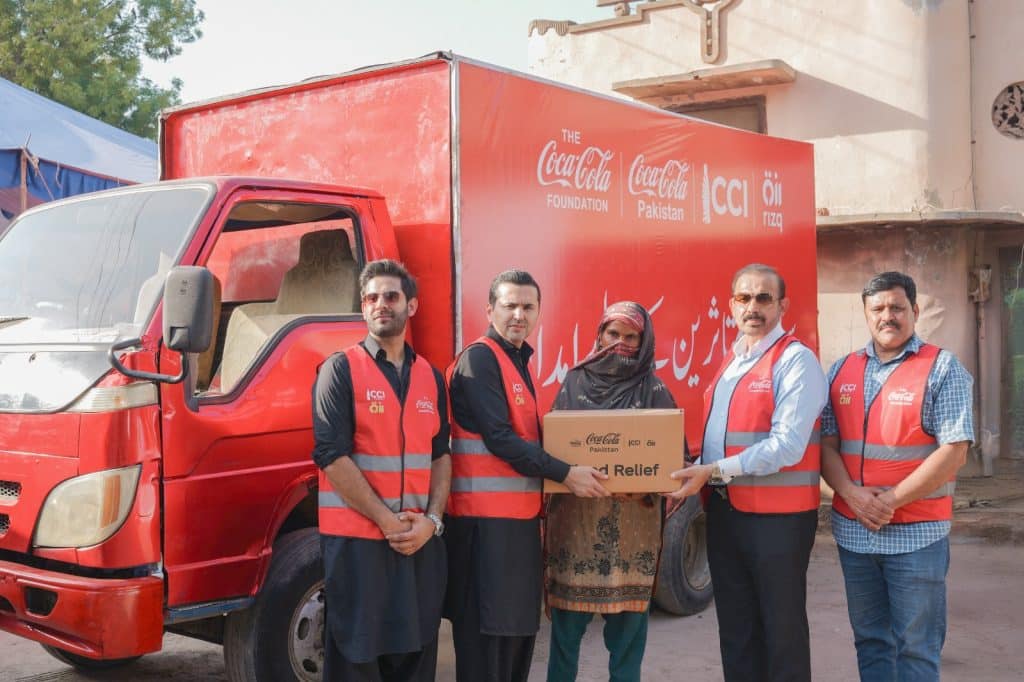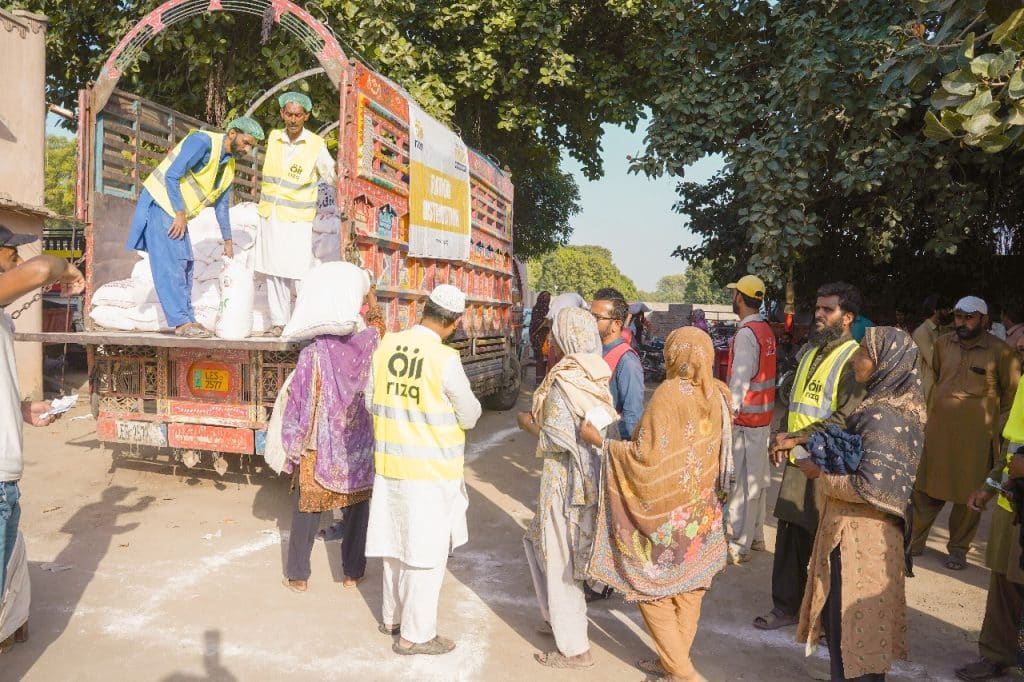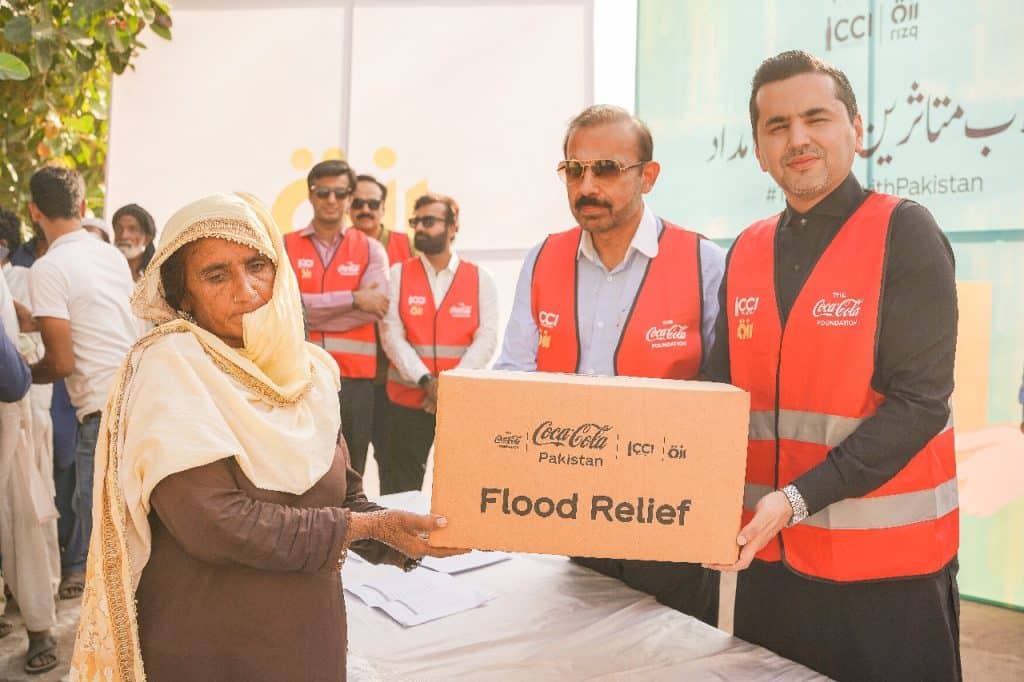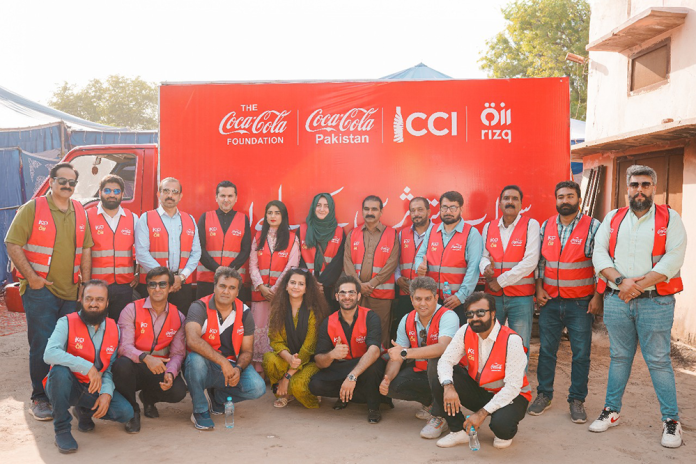The summer heat was finally giving way to the first breath of winter. The air carried a faint chill, the kind that usually signals harvest season — but this year, there would be no harvest. As Musa Aamir, Founder of Rizq, traveling with Rizq’s flood-relief convoy, stepped out of the truck, he drew in a deep breath. The air smelled of silt and diesel, of places that had endured too much. Musa looked over the horizon of Kabirwala — its skyline broken, its soil heavy — and wondered what would become of those who had lost their homes. The flood-relief drive by The Coca-Cola Foundation and The Coca-Cola System, in partnership with Rizq, had begun its journey weeks earlier in Jhang, carrying ration hampers filled with flour, lentils, sugar, and oil. Kabirwala was the next stop — one of the hardest-hit towns in Khanewal District.
From Jhang to Kabirwala, and onward to the mountains of KP and GB, Coca-Cola and Rizq continue their flood relief journey, standing beside families as they rebuild their lives with dignity.
Thousands of families have received monthly food packs, clean water, and warmth before winter. Yet, it’s the shared moments around a community dastarkhwan that truly capture the spirit of togetherness; where volunteers, families, and children sit side by side, sharing food, comfort, and hope after months of hardship.

Speaking at the distribution drive at Kabirwala, Sami Wahid, General Manager Coca-Cola Pakistan, shared that the courage and resilience of these communities continue to inspire the relief drive— a testament to what collective compassion can achieve.
It was here that Musa was reminded of the words of Kabir Das, the 15th-century mystic poet and saint whose name lives on in this very land: “The river and its waves are one surf: where is the difference between the river and its waves?”
That truth had never felt more literal. The same water that once fed Kabirwala’s crops had returned in fury, washing away the very soil that sustained life. It was as though the river had come to remind its people that creation and destruction flow in the same current — that the land of saints and fields can bless and break in the same breath.
Yet in this rhythm of taking and giving lies another truth: the river that destroys is also the river that returns, replenishing what it once claimed. The people of Kabirwala understand this deeply. Here, life has always been about endurance , about rebuilding after the flood, about giving when all seems lost. In these hard times, it is not only the river that gives back, it is people themselves, standing for one another when the waters rise.
Kabirwala, a historic town nestled between the Ravi and Chenab rivers, has long been a meeting place of faith and fertility. Its people draw strength from the shrines that rise along its dusty roads; from the tomb of Baba Pir Kabir, whose name the town bears, to the resting place of Khalid Walid, a saint whose story is etched into every prayer whispered by its farmers. For centuries, the canals fed by the Sidhnai Barrage had made this region one of Punjab’s most bountiful belts. But when the monsoon rains came in 2025, that abundance turned against them.

The floods arrived with a violence that no one was prepared for. The Ravi burst its banks, and the Sidhnai Canal overflowed into the fields. Water rose faster than warnings could spread — swallowing crops, tearing through mud homes, and erasing entire settlements in a matter of hours. For five long days, Kabirwala was less a city than a lake.
When the water finally receded, what remained was ruin. Bridges collapsed, roads cracked open, power lines fell. The old bazaar near the tehsil office, once alive with traders selling cotton, rice, and jaggery was buried under a layer of silt and shattered glass. Machinery rusted where it stood. The schools became shelters, their blackboards still bearing unfinished lessons. Even the Shrine of Khalid Walid, a centuries-old landmark west of the city, was ringed with stagnant water, its green flags hanging limp and heavy against the stone.
Livelihoods vanished overnight. Farmers lost their livestock, buffalo and goats that had been raised like family members. For many in Kabirwala, the grief of losing their cattle was deeper than the loss of crops. The land could be sown again, but those bonds were irreplaceable.
Musa still remembers stepping into one of the first neighborhoods they reached. The ground was soft beneath his feet, the smell of damp grain and diesel thick in the air. Children stood barefoot in doorways; their eyes blank with exhaustion. “There was nothing left,” he recalled. “No roofs, no stoves, no sound except the wind.”
With help from local authorities, they set up community dastarkhwans in school courtyards and empty lots. Here, freshly cooked meals were served to hundreds of families, each plate a small act of reassurance.

Musa watched as mothers lined up, holding their children close. Men formed chains to pass the ration bags down from trucks. The smell of lentils filled the air, mixing with the dust. “You could see hope return, even if only for a moment,” he said. “They smile when they take the food that Coca-Cola has brought for them, not because it’s enough, but because it reminds them, they still matter.”
Kabirwala’s recovery remains slow. The economy that was once driven by agriculture is limping forward. Cotton and rice crops are gone, and with them, the income of thousands of daily-wage workers. Roads still bear the scars of floodwaters, and the Sidhnai embankments are under repair. In the evenings, as the sun sets behind the canal, the city seems caught between past and present — a place learning to live again after being nearly erased.
For Musa, this work is not just logistics, it’s empathy in motion. “You begin to realize,” he said softly, “that what people need most isn’t just food or shelter. It’s to know that someone still sees them.”
As the convoy prepares to move onward, Kabirwala stands as both a warning and a lesson — a reminder of nature’s force, but also of human endurance. The water may have redrawn the city’s boundaries, but in the hands of its people — and those who came to help — something lasting has begun to take shape: the quiet rebuilding of faith, one meal, one family, one evening at a time.


